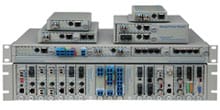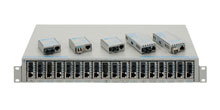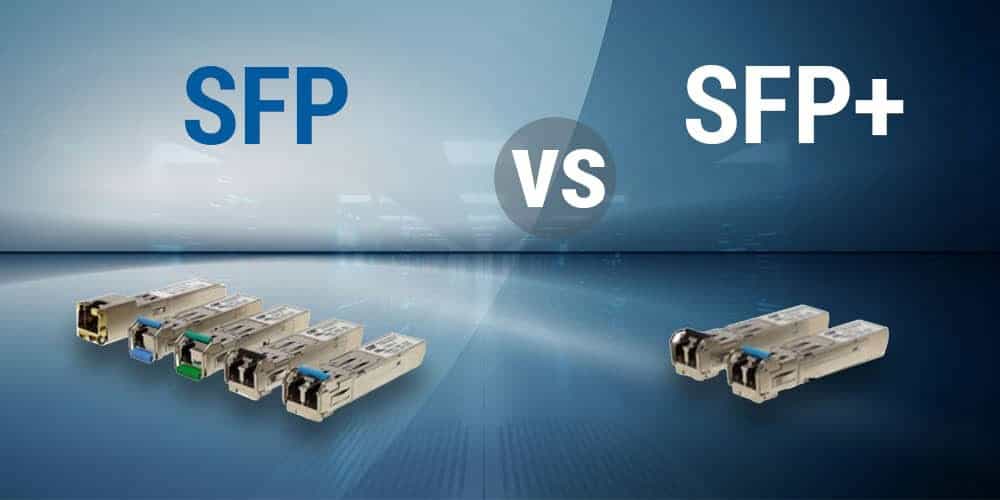- Products
- PoE Media Converters and Switches
- Ethernet & PoE Switches Product Selector
- Multi-Gigabit Ethernet and PoE Switches
- PoE PSE Commercial Switches
- PoE PSE Industrial Fiber Switches
- PoE Industrial Copper Extenders
- PoE Powered Media Converters
- PoE PSE Media Converters
- PoE Extenders & Injectors Product Selector
- Pluggable Transceivers Product Selector
- Single Pair PoE Products
- Product Lines

- iConverter Managed Multi-service Platform
- Copper to Fiber Media Converters
- Ethernet Media Converters
- 10 Gigabit Copper-to-Fiber
- 10/100/1000 Copper to 10 Gigabit Fiber
- 10/100/1000 Copper-to-Fiber with Integrated Management
- 10/100/1000 Industrial Copper-to-Fiber with Integrated Management
- 10/100/1000 Copper-to-Fiber with VLAN
- 10/100/1000 Dual Media Converter with VLAN
- Gigabit Copper-to-Fiber
- 10/100 Copper-to-Fiber with Integrated Management
- 10/100 Industrial Copper-to-Fiber with Integrated Management
- 10/100 Copper-to-Fiber with VLAN
- 10/100 Copper-to-Fiber
- Fast Ethernet Copper-to-Fiber
- Fast Ethernet Redundant Links
- 10Mbps Copper-to-Fiber
- 10Mbps Copper to Coax
- TDM Media Converters
- Serial Media Converters
- Ethernet Media Converters
- Fiber to Fiber Media Converters
- 10 Gigabit Fiber-to-Fiber Converter and Transponder
- 10 Gigabit Industrial Converter and Transponder
- SFP-to-SFP Fiber Converter and Transponder
- SFP-to-SFP Industrial Fiber Converter and Transponder
- Gigabit Fiber to-Fiber with 3 Rs
- 100/1000 Fiber-to-Fiber with 3 Rs
- Gigabit Fiber-to-Fiber
- Fast Ethernet Fiber-to-Fiber with 3 Rs
- Fast Ethernet Fiber-to-Fiber
- OC-3/STM-1 Fiber-to-Fiber
- OC-12/STM-4 Fiber-to-Fiber
- Carrier Ethernet Network Interface Devices
- CE 2.0 - 10G Demarcation NID
- CE 2.0 - 10/100/1000 Mult-port NID
- CE 2.0 - 10/100/1000 Mult-port NID with PoE
- CE 2.0 - 10/100/1000 8-Port NID
- CE 1.0 Service OAM - 10/100/1000 NID
- CE 1.0 Link OAM - 10/100/1000 Copper-to-Fiber NID
- CE 1.0 Link OAM - 10/100 Copper-to-Fiber NID
- CE 1.0 Link OAM - Gigabit Fiber-to-Fiber NID
- CE 1.0 Link OAM - Fast Ethernet Fiber-to-Fiber NID
- CWDM Multiplexers
- T1/E1 Multiplexers
- Ethernet Switch Modules
- Management System
- Chassis Options

- 1-Module Industrial Chassis

- RuggedNet Industrial Switches and Extenders
- Industrial PoE PSE Fiber Switches
- Multi-Gigabit Managed Industrial PoE+/BT Switches
- Multi-Gigabit Unmanaged Industrial PoE+/BT Switches
- 10G Managed 802.3bt PoE Switches
- 10G Unmanaged 802.3bt PoE Switches
- 10G Managed PoE+ Switches
- 10G Unmanaged PoE+ Switches
- 1G Managed PoE+ Switches
- 1G Unmanaged PoE+ Switches
- 1G Unmanaged 802.3bt PoE Switches
- 1G Managed 802.3bt PoE Switches
- Industrial SPE Switches
- Industrial Ethernet Switches
- Industrial PoE Copper Extenders
- Industrial Power Supplies

- OmniConverter Media Converter, Switches and Extenders
- PoE PSE Media Converters
- 10G Multi-Gigabit / Multi-Rate PoE Media Converter
- 10G Multi-Gigabit / Multi-Rate Media Converter
- 10/100 Multi-port PoE+ Media Converter
- 10/100 PoE+ Media Converter
- 10/100/1000 Multi-Port PoE+ Media Converter
- Industrial 10/100/1000 Multi-Port PoE+ Media Converter
- 10/100/1000 PoE+ Media Converter
- 10/100/1000 PoE++ 60W-100W Media Converter
- Industrial 10/100 Multi-port PoE+ Media Converter
- 1U Rack-Mount Shelf
- PoE PSE Compact Switches
- Multi-Gigabit Managed PoE+/BT Switches
- Multi-Gigabit Unmanaged PoE+/BT Switches
- 10G Managed 802.3bt PoE Switches
- 10G Unmanaged 802.3bt PoE Switches
- 10G Managed PoE+ Switches
- 10G Unmanaged PoE+ Switches
- 1G Managed PoE+ Switches
- 1G Unmanaged PoE+ Switches
- 1G Managed 802.3bt PoE Switches
- 1G Unmanaged 802.3bt PoE Switches
- Ethernet Switches
- Single Pair Ethernet (SPE)
- PoE Copper Extenders
- PoE Injectors

- miConverter Unmanaged Miniature Media Converters
- 10/100/1000 Copper-to-Fiber
- Industrial 10/100/1000 Copper-to-Fiber
- 10/100/1000 Ultra-Compact Copper-to-Fiber
- Gigabit Copper-to-Fiber
- 10/100/1000 Copper-to-Fiber PoE Powered
- 10/100 Copper-to-Fiber
- 10/100 Ultra-Compact Copper-to-Fiber
- 10/100 Copper-to-Fiber PoE Powered
- 18-Module Chassis
- Industrial 10/100 Copper-to-Fiber PoE Powered

- FlexSwitch Compact Switches
- Solutions
- Company
- Support
- How to Buy
SFP vs. SFP+: What's the Difference?

The main difference between SFP and SFP+ is their data rate. Otherwise, they both are compact media connectors that eliminate the requirement for excess modules of various media types for network repairs or upgrades. Therefore, they reduce network equipment inventories and help future-proof network upgrades.
SFP stands for small form-factor pluggable, and these transceivers support data rates up to 1Gbps. SFP+ stands for enhanced small form-factor pluggable, and it is backward compatible to SFP that can support higher data rates up to 16 Gbps.
SFP vs. SFP+ Compatibility
The SFP and SFP+ transceiver modules are compatible with almost all network devices like Ethernet routers, Ethernet Switches, PoE Fiber Switches, Ethernet media converters, Ethernet switches, and T1/E1 Multiplexers, which have the SFP ports. As the SFP and SFP+ transceiver modules are portable and interchangeable, they can be easily installed in the network switches for communication.
-
SFP Compatibility
SFP transceivers are compatible with managed media converters, unmanaged media converters, PoE switches, industrial PoE switches, Ethernet media converters, and most 3rd party products to meet specific networking protocols and media requirements. The SFP transceivers support multi-mode dual fiber, single-mode dual fiber, single-mode single-fiber, Coarse Wave Division Multiplexing, and unshielded twisted pair (UTP) copper cabling.
-
SFP+ Compatibility
The SFP+ transceivers are compatible with managed media converters and Ethernet switch products to meet specific networking protocols and media requirements. The SFP+ transceivers support multi-mode dual fiber, single-mode dual fiber, single-mode single-fiber, and Coarse Wave Division Multiplexing.
CWDM SFP vs. CWDM SFP+
As we utilize the SFP transceivers with CWDM/DWDM Multiplexers, the network capacity will increase because CWDM SFP transceivers transmit multiple data channels over separate wavelengths on the same fiber pair.
-
CWDM SFP
The SFP CWDM transceivers provide fiber connectors to enable connectivity between CWDM passive devices and the existing network equipment. CWDM SFP transceivers support wavelengths of 1270 nm to 1610 nm in 20 nm increments, and they are compliant with the ITU G.694 CWDM standard.
-
CWDM / DWDM SFP+
The SFP+ transceivers (10 gigabits enhanced small form-factor pluggable) are interchangeable compact fiber connectors. CWDM SFP+ transceivers provide the right tools for a single network device to connect to various types of fiber optic cables and distances. DWDM transceivers support wavelengths between 1525–1565 nm (C band) with 100GHz spacing.
CWDM SFP vs. CWDM SFP+ Compatibility
The CWDM SFP and SFP+ transceiver modules are compatible with almost all network switches/routers, media converters and PoE switches.
-
CWDM / DWDM SFP/SFP+ Transceivers Compatibility
Omnitron SFP CWDM transceivers can be used with managed media converters, unmanaged media converters, PoE switches, industrial PoE switches, and Ethernet media converters products that support SFP transceivers. The CWDM/DWDM SFP+ transceivers support single-mode dual fiber applications with Coarse Wave Division Multiplexing (CWDM) and Dense Wave Division Multiplexing (DWDM) wavelengths.
| Trancsivers | SFP | SFP+ | CWDM SFP | CWDM SFP+ |
|---|---|---|---|---|
|
Standard |
MSA SFF-8472 INF-8077i |
|||
|
Data rate |
1 Gbps |
16 Gbps |
||
|
Wavelength |
850 –1550nm CWDM/ DWDM |
850 –1550nm CWDM/ DWDM |
1270 – 1610nm |
1525–1565 nm |
|
Fiber Type |
Dual fiber Single Fiber Multimode fiber |
Dual fiber Single Fiber Multimode fiber |
Dual fiber Single Fiber Multimode fiber |
Dual fiber Single Fiber Multimode fiber |
|
Connector |
LC/SC RJ-45 |
LC RJ-45 |
LC/SC |
LC/SC |
|
Distance |
160 km |
120 km |
150 km |
80 km |
|
Operating Temperature |
Commercial (0° C to +50° C) Industrial (-40° C to +85° C) |
Commercial (0° C to +50° C) Industrial (-40° C to +85° C) |
Commercial (0° C to +50° C) Industrial (-40° C to +85° C) |
Commercial (0° C to +50° C) Industrial (-40° C to +85° C) |
Conclusion
All types of SFP and SFP+ transceivers allow you to connect multiple network switches to communicate and create ring protection protocols. If you are still unsure which of these SFP transceivers is practical for your network, contact us! Omnitron Systems provides 24/7/365 pre-sales support and free technical support to assist with customers' network designs and product selection. We are available 24/7 to answer your questions. Call us now









